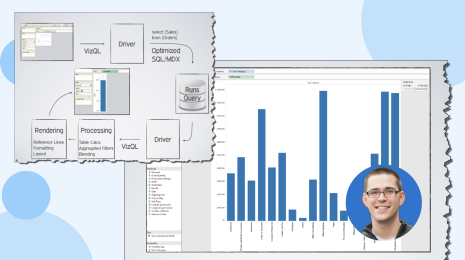Texas Children’s Hospital improves infant care outcomes and saves lives with data

Physicians and hospital staff at Texas Children's Hospital, a leading pediatric institution, are turning to visual analytics to help keep children alive and improve outcomes.
Barbara-Jo Achuff, MD is an attending physician in the pediatric cardiovascular intensive care unit (CVICU) at Texas Children’s, working with some of the most fragile patients with heart problems.
“In the CVICU there are 33 beds with patients ranging from tiny babies to adults—and our care team has a cacophony of data coming at us every day.”
A crucial aspect of care is sedation and pain control: “When a child has gone through open-heart surgery, we need to keep them comfortable and safe. Our monitors and complex medical devices need to stay in place, so sedation is a very big, important part.”
According to the team at Texas Children’s, research and the FDA suggests that repeated or prolonged use of sedative drugs may have negative effects on the developing brain. These effects are subtle and may include learning, memory, or behavior problems and their use in the intensive care setting remains undetermined. More research is needed to fully describe how exposure to these medications in early life will affect a child’s brain development. To determine best practices at Texas Children’s, Dr. Achuff wanted a deeper dive into recorded data, but parsing through it was vast, confusing and messy.
To start, Dr. Achuff sorted through five years of every sedative medication given to every patient coming into the CVICU. “I was paralyzed. That was greater than 500,000 rows in an Excel spreadsheet.”
Dr. Achuff first heard about Tableau from the hospital pharmacist who provided her with the medication data extracts. After watching a few training videos on the Tableau website, she downloaded a trial and pulled the data into Tableau. “I dragged and dropped, and dragged and dropped, and I started to understand the data. It was an ‘aha moment.’”
From outdated reporting to proactive care
Today, Dr. Achuff can dig into her patient data with Tableau to understand best practices for a wide range of patients—leading to more personalized, proactive care for her patients.
“I can start with the year of admission, go to the day of surgery, and then drill down to the detail of the very hour or minute a medication is given. Looking at a baby's constructed individual profile, it is obvious what patterns are evident. By looking at the historical patterns, we can affect change on the current patients and improve on what we’ve done in the past.”
Dr. Achuff took it a step further by creating a dashboard that included all patients and sedation doses administered. With this, she discovered that on a daily basis, a practice pattern emerged of a very high frequency of doses given at specific hours of the day: 4 a.m., 7 a.m. and 7 p.m.
“When this was shared with the entire care team, we wanted to understand the peaks of med use, or rescue doses, during the day. A rescue (or breakthrough) dose is a dose of medication given to treat spontaneous or incident pain. Everyone, including doctors, nurses and ancillary staff were a little taken aback because we thought maybe there was probably a pattern happening, but now we actually know and can see it right in front of us. And so now we can intervene and make systematic changes.”
With this new access to data, the nursing team introduced an objective sedation scale, transforming the CVICU’s approach to rescue doses. This intervention helps the care team refocus their attention to the bedside practice, and rely more on objective factors to drive medication management.
“Now that we've introduced this scale, the original pattern with high peaks of rescue doses given during specific hours of the day has changed.”
Instead of waiting six to eight months for a static report, hospital staff can parse through current data and dive deeper into patient-level data, helping refine best practices and spark conversations between physicians and the team. The result? Improved hospital performance, more effective delivery of care and superior patient outcomes.
“People want to understand and analyze data every single day because there is information in there that's going to affect our decisions at the bedside; it’s going to affect the babies and children we take care of every day. That is always the primary goal; it’s all about the kids.”









